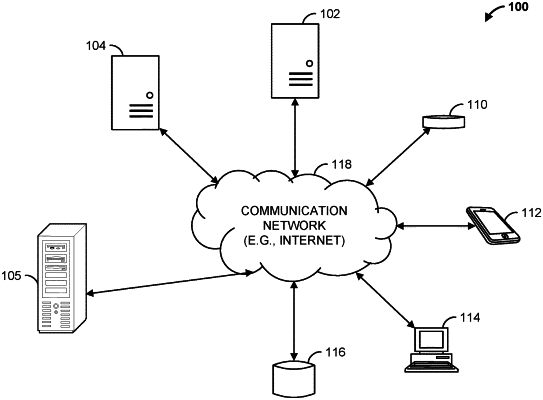| CPC G06Q 10/087 (2013.01) [G06N 20/00 (2019.01); G06Q 10/067 (2013.01); G06Q 10/06315 (2013.01)] | 12 Claims |

|
1. A system comprising:
a database having a hierarchical structure defined by a plurality of supplier-group associations, a plurality of supplier-item associations, and a plurality of group-item associations;
a memory having instructions stored thereon; and
a processor configured to read the memory and coupled to the database, wherein the processor configured to read the instructions to:
receive first supplier data including a first supplier identifier that identifies a first item in a first supplier's numbering system;
store the first supplier data in the database;
determine a first retailer identifier associated with the first supplier identifier, wherein the first retailer identifier identifies the first item in a first retail numbering system, and wherein the first retail identifier corresponds to first item data stored within the database;
generate a first supplier-item association defining a hierarchical relationship between the first supplier data and the first item data in the database;
determine a first group identifier associated with the first supplier identifier, wherein the first group identifier identifies a plurality of items in a second retail numbering system, wherein the first group identifier corresponds to first group data stored within the database, wherein each item of the plurality of items are assigned to the first group identifier, and wherein the plurality of items includes the first item;
generate a first supplier-group association defining a hierarchical relationship between the first supplier data and first group data in the database;
determine a second retailer identifier associated with the first group identifier based on one or more group-item associations defining a hierarchical relationship between at least the first group identifier and an associated set of retailer identifiers, wherein the second retailer identifier corresponds to second item data within the database;
train a machine learning model to detect anomalies in the hierarchical structure of the database, wherein the machine learning model is trained by a supervised training dataset based on attributes of items in the plurality of items, wherein the machine learning model is configured to generate an anomaly score between the first item data and the second item data, and wherein the machine learning model is configured to generate the anomaly score by:
generating a first word embedding representative of at least one attribute of the first item data;
generating a second word embedding representative of the at least one attribute of the second item data; and
comparing the first word embedding and the second word embedding to generate the anomaly score;
generate a second supplier-item association defining a hierarchical relationship between first supplier data and the second item data in the database when the second retailer identifier matches the first retailer identifier, and when the second retailer identifier does not match the first retailer identifier and the anomaly score is below a predetermined threshold;
in response to determining the anomaly score is equal to or above the predetermined threshold, transmit an electronic communication identifying the first item data and the second item data; and
train an additional machine learning model to detect anomalies in the hierarchical structure of the database, wherein the additional machine learning model is trained by a supervised training dataset based on attributes of items in the plurality of items and at least the second supplier-item association.
|